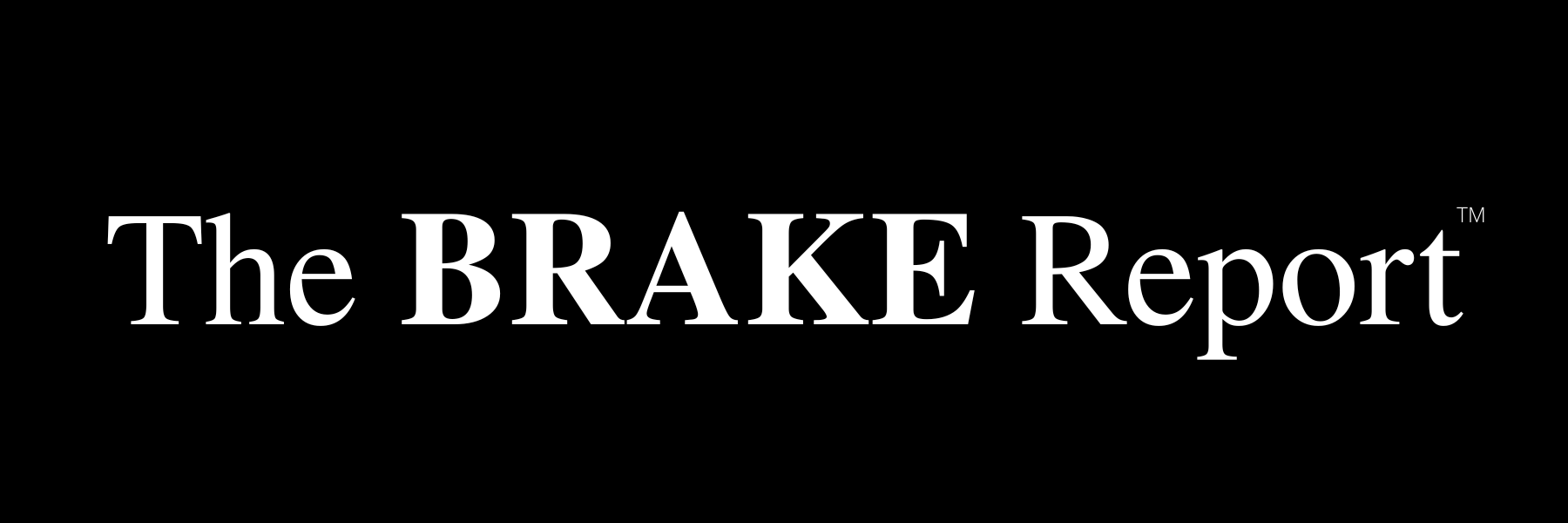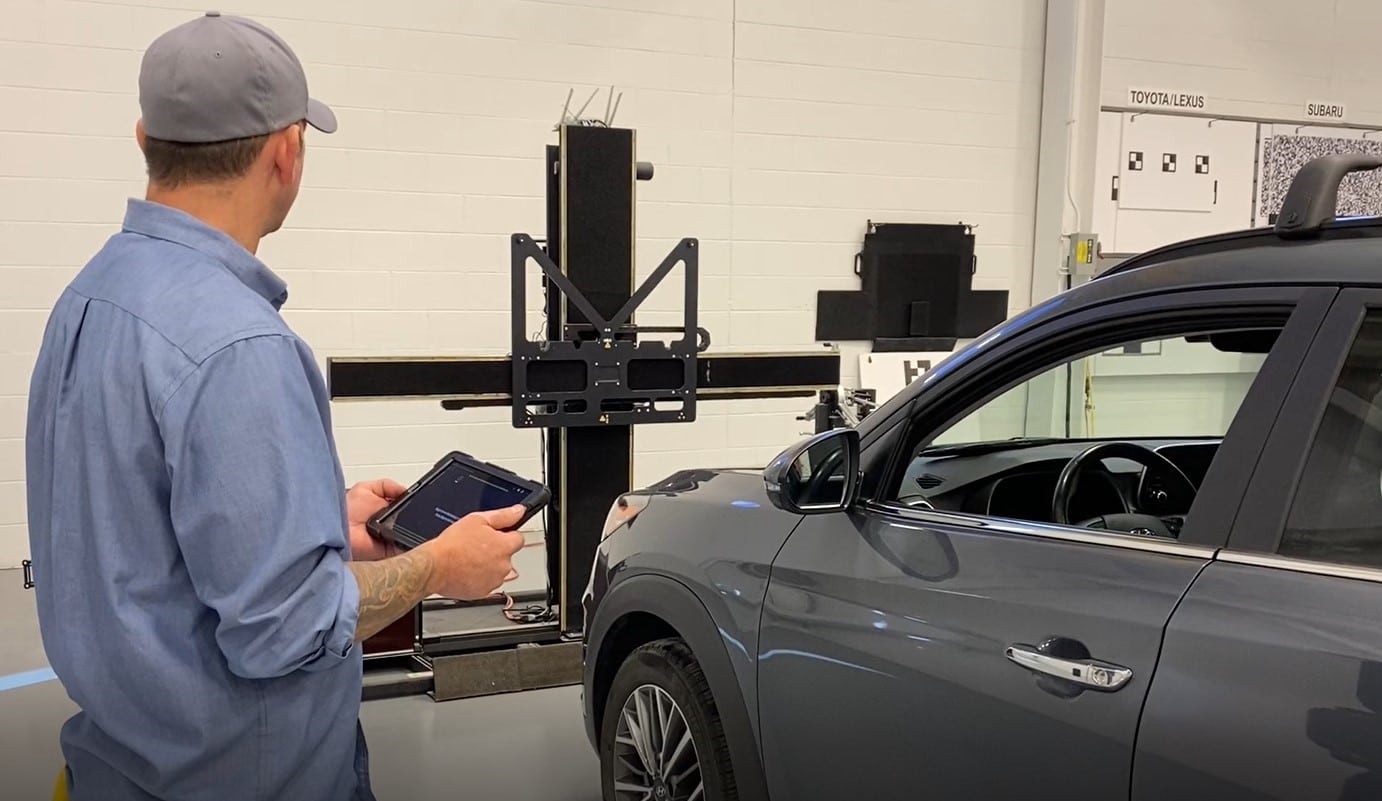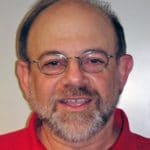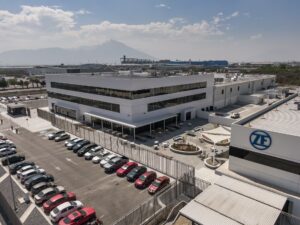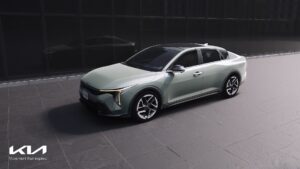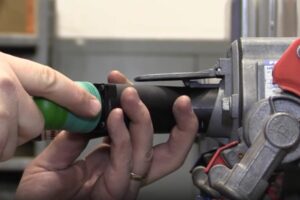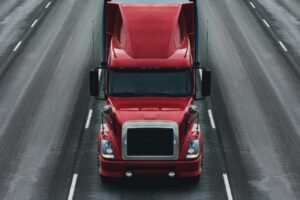GRAND RAPIDS, Mich. — Last week the Burke Porter Group (BPG) announced the creation of a new division to provide advanced driver-assistance systems (ADAS) calibration equipment to the aftermarket. The long-term testing-and-calibration company appointed Doug Kelly as the new division’s president. The BRAKE Report caught up with Kelly and posed some questions about the type of market that might exist for ADAS calibration equipment, the competition and why keeping ADAS calibrated was important.
As a means to meet needs for ADAS calibration by repair facilities which do not have the capabilities, BPG has set up several calibration centers for B-to-B operations and a means of perfecting the process.
This is the first of several posts emanating from the interview.
TBR: Doug, can you please explain to us what you mean by the aftermarket for ADAS calibration equipment? Who are the customers you seek?
Kelly: BPG has been the end-of-line [factory] market leader with the car companies and doing calibrations as well as vehicle testing for decades. And I ran a company before called asTech, which was serving the automotive aftermarket. And we were trying to do this. We bought all the OEM tools, we did everything according to the manufacturer’s requirements, and it was taking us far too long, and it was far too complicated. And there were no standards in place. And I thought there had to be a better way. I was introduced to the folks of Burke Porter and made a trip to the factory and I saw how they were doing this process in a much more sophisticated way and more consistent way. And in a controlled environment.
The primary target for this concept is going to be repair facilities that don’t do it themselves, it could even be dealer groups. Certainly fleet operators, rental car companies, glass-replacement companies, any organizations that are performing service work, but don’t have the either capacity or capability to successfully calibrate these vehicles and put them back to the OEM specification are potential customers. Whether that represents the larger or smaller part of the market, I think, is still to be determined.
But I believe that there are those out there that have reputational needs, to make sure that their repairs, even if they’re not doing the calibration, deliver back to the vehicle owner, a car that meets its original, original requirements.
We think the market is right for what we’re doing. We’re going to expand Burke Porter’s own calibration centers, but that won’t be enough to satisfy the market demand. So, we’re going to work with others that want to do this as a profession, want to take it seriously and do it in the right environment, make the right investments and tools and technology and people.
We’ll most probably end up partnering with some pretty large or larger organizations to scale the solution to the marketplace.
TBR: I understand that it is a large potential market, from the number of auto dealerships as well as other repair operations. What is your competition like considering the potential business? Are you alone or do you have competitors?
KELLY: It’s competitive in the sense you have a lot of other (calibration) systems out there provided by well-known companies that are in that space. There are organizations out there today that have put together targeting systems and we’ll call them calibration systems. But the truth is, they’re not vetted. There’s no real standards in place to determine whether those systems deliver the same result that you might expect out of the factory. Most are designed for relatively low volume and are relatively inexpensive.
There is calibration as a hobby, and there’s calibration as a business. As I describe it, if you have your own repair center, and you’re doing a couple cars a day or a week, the ability to build expertise in this area is going to be a challenge. I mean, how likely are you going to see the same car with the same system, because there’s no standards across the manufacturers.
I mean, Mazda, for example, has three different blind spot-monitoring systems and two different ways to calibrate it. And that’s just one small car company.
So, if I’m doing relatively low volume, even if I dedicate space and have the right lighting and level floor, how much experience am I going to gain in that whole process? People think it’s about putting targets or triangles in front of the vehicle. But when it doesn’t calibrate, which happens, of course, somebody has to be skilled to chase wires and to start to understand root cause and not just throw parts at the vehicle.
Our view is that there’ll be those that treat calibration a hobby and those who treat it as a professional business. And our strategy is to work with those that really want to step up and, and do you know, 20-30-40-50 jobs a day, through a high throughput system similar to an OEM system scaled down for cost reasons. But on a scale where you can process repeatedly a large volume of vehicles and deliver an OEM result consistently out of a dedicated site.
Now, is it physically separated from your (repair) building, possibly. And you may see, for instance, in an auto mall, where you know, dealers collectively say we’re going to either jointly own or sponsor a calibration center and center our work there. Because it is it is an art, it’s a science, there’s a lot of thought that goes into building these centers and to operating them and to maintaining and advancing them because, these systems keep changing it. So today, it’s radar and cameras, and soon we’ll see Lidar and then there’ll be night vision.
TBR: You just mentioned Lidar, cameras and radar. There are so many types of ADAS and the hardware and software running them, I imagine it’s a big challenge for anyone doing calibration. How much ADAS is BPG going to cover or attempt to cover?
Kelly: It’s all of the above. I mean, we can because Burke Porter’s position in developing factory calibration systems requires them to, even years in advance of a car coming to market, provide those solutions. There are numerous examples of where technology has yet to make it into the vehicle, but it’s already in testing, it’s already in development, and Burke Porter is there.
The intent is to create, in the wake of what BPG has created on the OEM side the same for the aftermarket.
One of the questions people always ask is how future proof is what they are buying from a technology standpoint. And it’s the right question to ask because I don’t want to make a significant investment in technology or equipment or facilities, and then be told two years later I should add an extra 30 feet in front of the vehicle. And I don’t have that space, right, because it’s that’s kind of a tough nut to swallow, if I’ve got a five-year lease in my building and it suddenly doesn’t accommodate the new technology.
That’s the advantage Burke Porter is going to bring to the market. We’re going to have a significant advantage looking ahead to see what’s coming down the pipe.
TBR: To get it straight, much of the technology we’re talking about here, has been developed from the end-of-line-testing equipment, the core group which is developed for the OEMs.
Kelly: Right. And rather than being the size of the school bus (like the end-of-the-line equipment), we’ve shrunk the equipment, the footprint, to be more economical or practical in the aftermarket. But if you go to the factory, the same principles, how the cars are being centered, how the targets are being presented, all those same concepts are being applied to our solution, the aftermarket,
TBR: That leads me to the question of where are you with producing these systems aftermarket systems and marketing them?
KELLY: There’s a number of rooftops that Burke Porter has already built themselves. And I think it’s really important as a provider of any service that you kind of taste your own cooking. It’s one thing to go out there and tell people “I got the next greatest thing,” but can you prove it and so Burke Porter has its own calibration centers. Each one has gotten progressively better than the next.
Our plan is to continue to grow the Burke Porter footprint but in addition look for strategic partnerships to accelerate the growth to handle the impending demand that’s out there. Customers don’t want to hear it’s going to take two or three days to get to your car. We want to get to a position where folks can literally schedule getting in that same day. We, arguably, want to get the cycle time down significantly. In the factory, it’s 90 seconds; we’re not going to get there in 90 seconds in the aftermarket, there’s just too much stuff at the beginning and afterwards as to happen. But this hour and a half, just to put it in front of a targeting system, we’re looking to blow those numbers out of the water.
I want to get to a point where ultimately, we have high throughput OEM quality with a lower skill set and can provide a service to the market that isn’t just Burke Porter. But it’s Burke Porter working in partnership with a number of strategic partners to create that capacity in the marketplace.
TBR: There are Burke Porter Group centers, calibration centers now; are you working with consumers or with repair shops that would send vehicles to you?
Kelly: Exactly. It’s strictly B-to-B. We’re not going to be building a consumer brand around this. There’s enough choice in the automotive aftermarket today for where the consumer takes his/her car for repairs and we’re not going to compete with what we consider to be our customers. Our customers are those already repairing vehicles that don’t have the capacity, the capability to do this calibration in house and want and need to work with a third party to ensure that it’s done right. And it’s done fast. That’s our key.
TBR: How many of these centers do you have?
KELLY: Today, we have five. It’s five and growing. We are in the Midwest; we have Chicago, we have Detroit, we’ve got Pittsburgh. And there’s more than one location in each of those areas or soon will be. Our strategy is to, again, grow, but as fast as we can grow, but it still won’t be fast enough to meet the market demand, which is why we’re going to be partnering with others to expand the footprint.
TBR: So, you’re planning to do a dual strategy of putting some of your own centers out there, plus sell equipment, and I take it, use your centers as models. When you sell equipment the customer can study your center to duplicate it in places you’re not moving into.
KELLY: That’s a good description. And we’ll be doing both our centers and then working with others. But when you’re working with others, it’ll be more of a partnership relationship, you know, ongoing training, even helping with the recruiting process.
I talked about making sure we continue with the update on all the procedures and, and maybe even assisting in some cases, those partners in the repair process itself, or suddenly, they get into a calibration and need extra help.
It’s more than just selling somebody a piece of equipment, and good luck, or here’s a manual; we’re going to be partnering very closely with these other entities to make sure that whether you take it to a Burke Porter location or an Acme location, you’re going to get the same end result, both in terms of information, the quality of the calibration, and the repair process is so
TBR: Any fear that you’ll have trouble with that strategy because potential customers will think that they’re competing with Burke Porter group?
KELLY: No. Now the market needs literally hundreds of these rooftops, and I don’t care who you are. Trying to build that many locations that quickly on your own, and deliver a consistent result, is almost an impossible task. If this were over a 10-year timeframe, then then Burke Porter going alone might make perfect sense. But the cars are out there and have this technology. And that’s my concern is when the consumer finally wakes up and says, “wait a minute, was my car calibrated?” I mean, how many consumers today would actually know even ask for a calibration that it’s even needed? What when they find out suddenly [they need calibration for their ADAS] they’re going to say, “who’s doing this work? And where do I get it done? And how do I know it’s done correctly?” And so that’s why I say we need to partner with others to make this happen faster than if we did it on our own. So no, I don’t see
